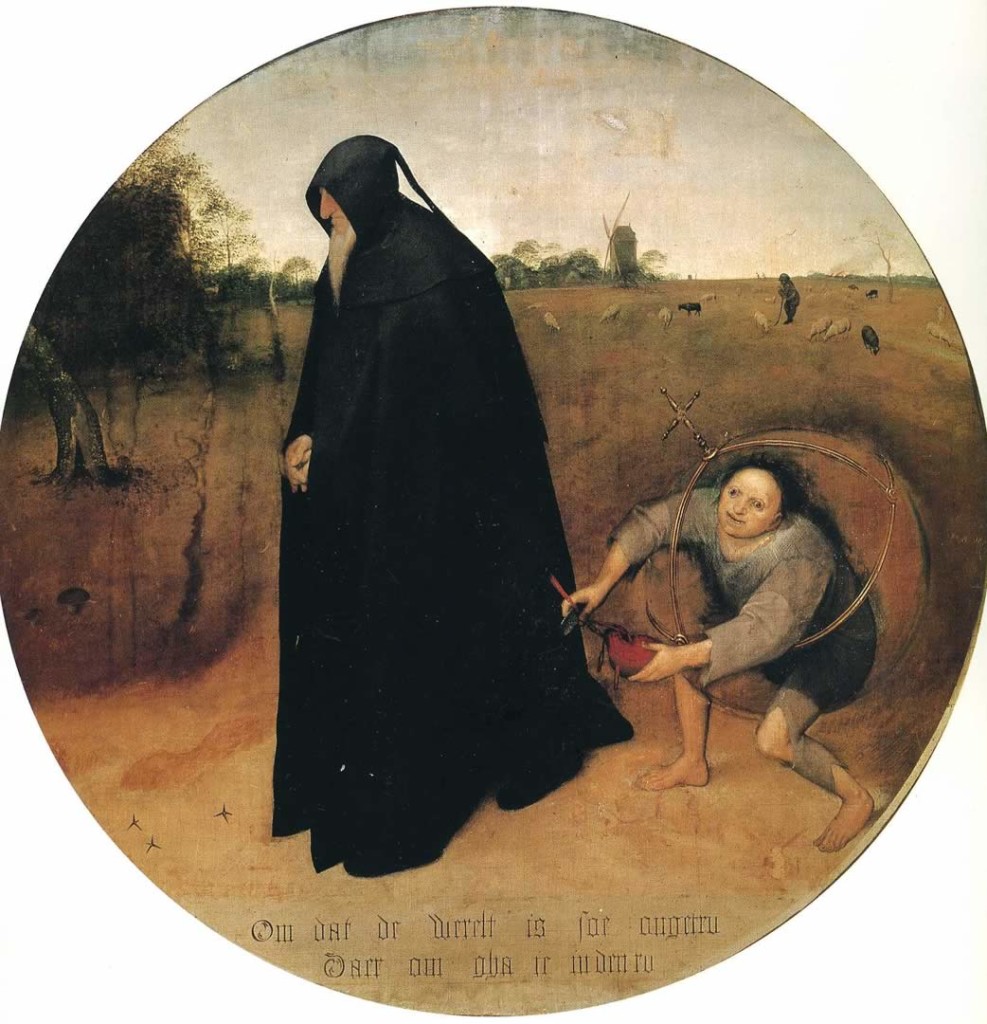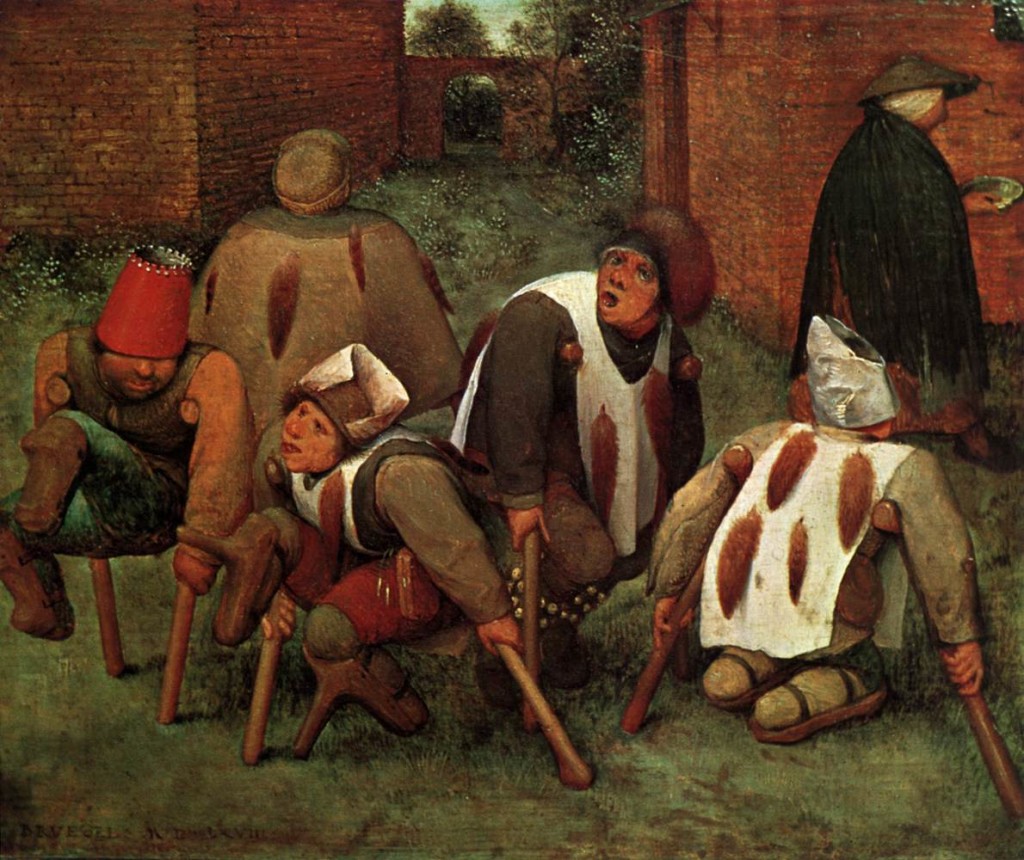It can be said that Bosch and Bruegel are not much alike in effect. Bosch’s greatest work is calculated to give rise to shivers of spiritual terror linked to sexual excitement as the primal reflex among men. Bruegel’s horror of sin also deals with damage to the immortal soul but with an added ignobility upon living man in which foolishness becomes an even worse sin than lust. The aspect of sexuality may be implied or sublimated with other dimensions of the infinite but are not figuratively represented other than as a form of “nothing space” in which a broader narrative can unfold.

Pieter Bruegel the Elder, The Misanthrope. His last completed work, 1568: More puzzling is the form of the thief in a round glass/soap bubble belted with metal crossed blades with a cross. May be its a possible interpretation of Christianity: Christianity is the religion of suffering, “you must suffer and be devoid of wealth in order to be saved”: as a sarcastic attitude towards the wealthy hypocrite misanthrope who will lose with certainty his wallet by the thief. The sarcastic expression of the thief reinforces this view. On the other hand, another view has been expressed that the glass/soap bubble may indicate the fragility and vulnerability of life and property. click image for source…
Bruegel’s seems to view the folly of materialism as an indirect consequence of some cosmic human drama rotating around an axis of trauma and hysteria in which humanity contained a kernel of free will within the scheme of life to latch onto something akin to wisdom to get him by through the skin of his teeth in avoiding an infinite capacity to demean and defraud himself, a sort of waywardness that would fully and tragically manifest itself later in the Thirty Years War. Bruegel’s sociological humanism can be perceived as a sort of firewall against theological ideologies which inevitably gave rise to violent expressions and fantastic, self-destructing utopias.

—the work would be a satirical parody, with the beggars representing the different classes of a society on the road to ruin. The classes are indicated by their headgear: a cardboard crown for the king, a paper coiffe for the army, a beret for the bourgeoisie, a cap for the peasantry, and a bishop’s mitre for the church. The painting is also thought to contain an allusion to the political situation of the day and the Beggars’ Revolt against the Spanish occupation. In 1566 Calvinist lords tried to rally the minor nobility and the upper ranks of the bourgeoisie to form a sort of national unity, united by the cry “Vive le gueux” (long live the beggar!). It is thought that the foxtail was the symbol they used to show they belonged to the movement.
A small yet powerful painting
None of the hypotheses put forward to explain the work, however convincing they may appear, have been proven. …click image for source…
To his credit, Bruegel’s representation of foibles was neither substantially malicious or bitter. Negative behaviors such as misanthropy are viewed as a form of self interest, ultimately degrading in its manner such as avarice or gluttony. Aesthetically, we are dealing with an anti-Michelangelo, another aspect of humanism that rebukes the beauty of the idealized body as a symbol of spiritual nobility in favor of more obvious earthly connections where a symbol’s majesty finds it beauty within the plain and the simple. ( to be continued)…





 COMMENTS
COMMENTS